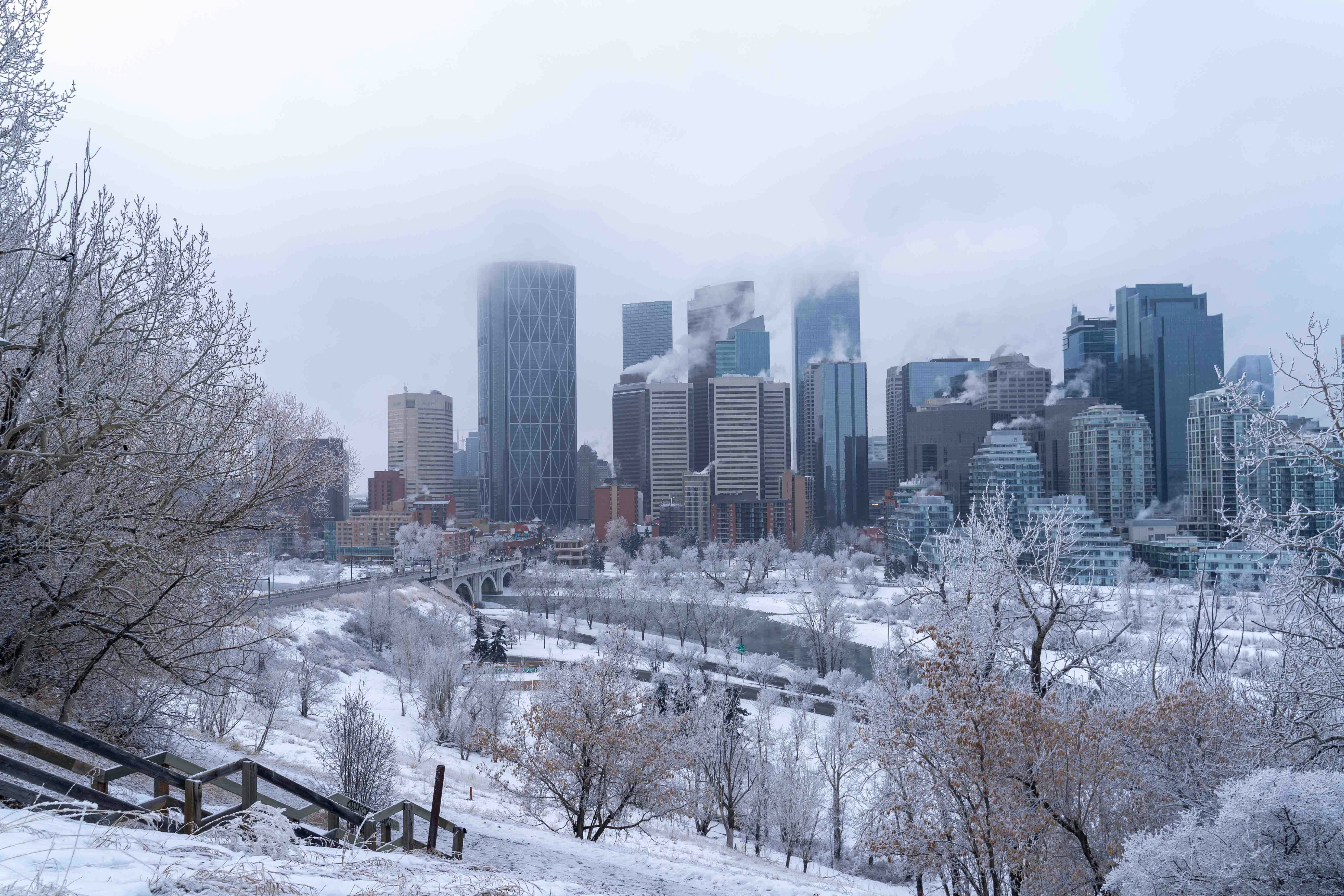Window film has many benefits, but have you ever thought about what its job is in the winter? Does window film just get to take a break for three plus months? The short answer is no, but keep reading for the long answer! Here are six reasons why window film is the perfect solution for your commercial building in the winter.
How Window Film Works in the Winter
Window film is often associated with keeping buildings cooler in the summer, but it can also play a significant role in improving your building’s energy efficiency and comfort during the colder months. In winter, the function of window film shifts from blocking out heat to providing insulation and reducing heat loss. By understanding how window film works in winter, building owners can take advantage of its year-round benefits.
Reducing Heat Loss
One of the primary ways window film benefits buildings during the winter is by reducing heat loss through windows. In cold weather, the interior of your building is often much warmer than the outside air. Windows, however, are typically the weakest point of insulation, allowing heat to escape, which can lead to increased energy costs as heating systems work harder to maintain a comfortable temperature.
Standard windows, especially single-pane glass, are poor insulators. Heat can escape through the glass, and cold air can seep in. This leads to drafts, making rooms feel colder and causing the furnace or heater to run more frequently. Window film can help mitigate this problem by adding an extra layer of insulation. Many types of window film are designed to reflect heat back into the room, preventing it from escaping through the glass. This is especially true for low-emissivity (low-E) films, which have a thin metallic layer that reflects heat while still allowing visible light to pass through. Low-E films are particularly effective in winter, as they reduce heat loss without darkening the space or impacting natural daylight.
Enhancing Insulation
Commercial window film acts as a supplemental layer of insulation, improving the overall thermal performance of the windows. It works by reducing heat transfer from the inside of the building to the colder outside environment. This extra layer of protection can significantly improve the overall comfort during the winter, especially in spaces with large or single-pane windows. The film traps air between the window and the film layer, acting as a buffer to reduce heat movement.
In buildings with multiple windows or large glass areas, window film can make a noticeable difference in keeping the temperature consistent across the entire space. This reduces cold spots near windows and minimizes the need for supplemental heating, ultimately leading to lower energy consumption and lower heating bills.
UV Protection
While window film is most commonly known for blocking harmful ultraviolet (UV) rays during the summer, it also provides important UV protection in the winter months. UV rays can penetrate through windows, even on cloudy or cold days. Over time, exposure to UV radiation can cause fading of fabrics, wood furniture, flooring, and artwork. Window films with UV-blocking properties help preserve the color and integrity of interior surfaces by blocking up to 99% of harmful UV rays, regardless of the season.
Though UV radiation may feel less intense in winter, the long-term effects of exposure are still a concern. Window film provides year-round protection against UV damage, reducing the need for expensive repairs and replacements due to fading or degradation.
Maintaining Comfort and Reducing Drafts
Another significant benefit of window film in winter is its ability to reduce drafts and enhance comfort inside of buildings. Air infiltration around windows is a common problem in many offices and warehouses, especially in older buildings or those with inefficient window seals. In winter, the temperature difference between the inside and outside of your building can cause cold air to leak through gaps or cracks around windows, leading to drafts.
By applying window film to the windows, you can improve the overall seal of the window and reduce the infiltration of cold air. Although window film itself does not physically seal gaps, it works in tandem with weatherproofing measures (like caulking or weatherstripping) to help create a more comfortable environment. This makes it easier to maintain a stable, warm indoor temperature without relying heavily on space heaters or additional heating systems.
Energy Savings
In addition to increasing comfort and reducing drafts, window film can contribute to significant energy savings during the winter. By minimizing heat loss, window film can help your heating system operate more efficiently, reducing the amount of energy required to maintain a comfortable temperature. This can lead to lower heating bills over time, especially in buildings with large windows or older glass.
Energy-efficient window films are a cost-effective way to upgrade the insulation properties of your windows without the need for costly window replacements. By keeping the heat inside during winter, window film essentially helps “retain” your building’s heat, making it warmer while using less energy.
Looking for a partner in energy and cost saving window films? Give us a call!
We hope that this article provided some useful information about how commercial solar control window films are perfect for this winter season. If you have any questions, or would like to arrange a free, no obligation consultation at your commercial space, contact us by calling (801) 810-8468 or emailing us at info@shadedglass.com. We would be glad to explain these innovative and functional window films available and help you get exactly the right film to fit your needs in the Orem, Ogden, St. George, and Salt Lake City, Utah areas.
